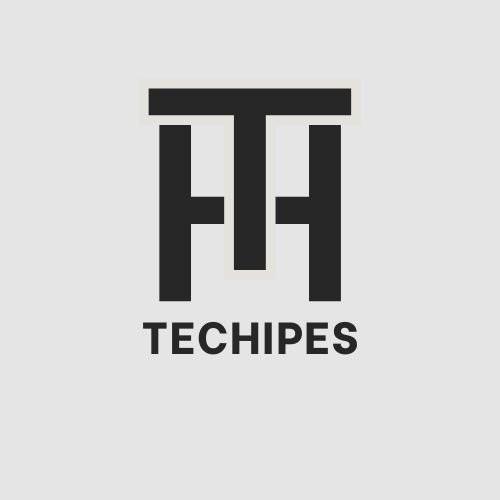In today’s digital age, protecting sensitive information has never been more crucial. Organizations are constantly at risk from cyber threats, making robust cybersecurity solutions a top priority. One of the most effective tools in this realm is Symantec report software installed by computer. This powerful software not only helps businesses monitor their security posture but also provides detailed insights into the applications and systems in use. By leveraging the capabilities of Symantec’s reporting features, organizations can identify vulnerabilities, ensure compliance, and ultimately enhance their overall cybersecurity strategies. As cyber threats become increasingly sophisticated, understanding and utilizing this software is essential for maintaining a secure digital environment.
Introduction to Symantec Software
Symantec Corporation, founded in 1982, has long been a pioneer in the cybersecurity space. Its software solutions cater to a wide range of users, from individual consumers to large enterprises. The company focuses on protecting data, managing risk, and enhancing compliance through its suite of products. One of the critical aspects of Symantec’s offerings is its reporting software, which provides detailed insights into the security posture of installed systems.
Why Reporting is Crucial
In an era where cyber threats are increasingly sophisticated, the ability to generate and analyze reports on installed software is paramount. Such reports provide visibility into potential vulnerabilities, compliance status, and overall system performance. The integration of reporting tools within Symantec software enhances the user’s ability to make informed decisions regarding their cybersecurity strategies.
Cybersecurity is not just about having the right tools in place but also about understanding how those tools are performing and what potential risks they may be exposing your organization to. Reporting allows organizations to gather data on security incidents, analyze patterns, and develop strategies to mitigate risks. By utilizing reporting software, organizations can ensure that their cybersecurity measures are effective and aligned with industry standards.
Overview of Symantec Report Software
Symantec report software installed by computers is designed to gather data about the security status of systems, including installed applications, system updates, and user activities. It serves multiple purposes:
- Security Assessment: Identifies vulnerabilities in installed software.
- Compliance Monitoring: Ensures adherence to industry regulations and standards.
- Performance Analysis: Evaluates system efficiency and identifies bottlenecks.
The software is highly configurable, allowing organizations to tailor reports to meet specific needs. This flexibility makes it an invaluable tool for IT departments and security teams.
Core Functionality
At its core, Symantec report software functions as a central hub for collecting, analyzing, and presenting data related to an organization’s security posture. It leverages advanced analytics to sift through vast amounts of data, producing actionable insights that can guide decision-making. Organizations can customize reports to focus on specific areas of concern, such as network vulnerabilities, endpoint security status, or compliance with regulatory frameworks.
User-Friendly Interface
One of the standout aspects of Symantec report software is its user-friendly interface. Designed with usability in mind, the software allows users, regardless of their technical expertise, to navigate through various functionalities with ease. The intuitive layout helps users quickly access critical data, generate reports, and customize settings to suit their specific needs.
Key Features of Symantec Reporting Software
Detailed Inventory Management
One of the standout features of Symantec report software is its ability to perform comprehensive inventory management. This feature helps organizations maintain a clear record of all software installed on their systems, including:
- Version Tracking: Monitors the versions of installed software, ensuring that they are up to date.
- License Management: Keeps track of software licenses, reducing the risk of non-compliance.
With detailed inventory management, organizations can ensure that they are not only compliant with licensing agreements but also that they are utilizing the latest and most secure versions of their software. This proactive approach is vital in a world where outdated software can become a target for cyber threats.
Automated Reporting
Automation is a cornerstone of modern IT management, and Symantec’s reporting software offers automated reporting capabilities. Users can schedule regular reports that cover various metrics, such as:
- Security Alerts: Notifications of any security breaches or vulnerabilities.
- Compliance Reports: Documents that confirm adherence to regulatory requirements.
Automated reporting frees IT teams from the burden of manual report generation, allowing them to focus on more strategic tasks. This feature is particularly beneficial for organizations that must comply with stringent regulatory requirements, as it ensures that reports are generated consistently and on time.
Customizable Dashboards
The reporting software includes customizable dashboards that provide a visual overview of the system’s health. Users can:
- Select Metrics: Choose which data points are displayed.
- Filter Views: Focus on specific areas, such as threat management or software inventory.
These dashboards facilitate quick decision-making and enable IT teams to address issues proactively. The ability to visualize data in real-time can help organizations identify trends and patterns that might otherwise go unnoticed, allowing for quicker responses to emerging threats.
Advanced Analytics
Another notable feature of Symantec report software is its advanced analytics capabilities. The software employs machine learning algorithms to analyze historical data, identify trends, and predict future vulnerabilities. By understanding patterns in data, organizations can take a more proactive approach to cybersecurity, implementing measures before threats can materialize.
Benefits of Using Symantec Report Software

Enhanced Security Posture
By regularly generating reports on installed software, organizations can significantly enhance their security posture. The reporting software helps identify unpatched vulnerabilities and outdated software, allowing teams to prioritize remediation efforts. This proactive approach is essential for defending against cyber threats.
In a landscape where cyber threats are becoming increasingly sophisticated, maintaining an up-to-date inventory of installed software and their respective vulnerabilities is vital. By leveraging Symantec report software, organizations can ensure they are not only aware of potential threats but also equipped to address them promptly.
Improved Compliance
Compliance with industry regulations, such as GDPR and HIPAA, is critical for businesses operating in regulated sectors. Symantec report software provides the necessary tools to monitor compliance, ensuring that organizations can demonstrate adherence to regulatory requirements during audits. This capability minimizes the risk of penalties and reputational damage.
Having the ability to generate compliance reports easily helps organizations streamline their audit processes, making it easier to provide documentation to auditors and regulators. Furthermore, by identifying compliance gaps before they become issues, organizations can take corrective action proactively.
Streamlined IT Management
The automation and customization features of Symantec report software streamline IT management processes. By reducing the time spent on manual reporting and allowing for real-time insights, IT teams can focus on strategic initiatives rather than administrative tasks. This efficiency leads to better resource allocation and improved operational effectiveness.
In today’s fast-paced business environment, the ability to respond quickly to security incidents and changes in the regulatory landscape is critical. Symantec report software empowers organizations to act swiftly and effectively, ensuring that their cybersecurity measures are always aligned with best practices.
You May Also Like: Unveiling the Leica R 90mm f2 Pre ASPH: A Timeless Classic with Modern Magic
The Role of Symantec in Cybersecurity
A Trusted Name in the Industry
Symantec’s long-standing reputation in the cybersecurity sector positions it as a trusted name for businesses seeking effective security solutions. The company’s commitment to innovation and excellence has earned it numerous awards and accolades, reinforcing its status as a leader in the industry.
Symantec’s extensive history and experience in cybersecurity provide organizations with confidence that they are investing in a proven solution. The company has consistently adapted to the changing threat landscape, ensuring that its software remains effective against emerging threats.
Comprehensive Threat Intelligence
Symantec’s reporting software benefits from the company’s extensive threat intelligence capabilities. By leveraging data from millions of endpoints worldwide, Symantec can provide users with timely insights into emerging threats and vulnerabilities. This information is crucial for making informed decisions about software updates and security measures.
By integrating real-time threat intelligence into the reporting process, organizations can stay ahead of potential risks and enhance their overall security posture. The ability to access timely information about global threats can be a game-changer for organizations striving to protect their digital assets.
Installing Symantec Report Software
System Requirements
Before installing Symantec report software, organizations must ensure their systems meet the necessary requirements. Key considerations include:
- Operating System Compatibility: The software should be compatible with the existing operating systems in use.
- Hardware Specifications: Adequate RAM, storage, and processing power are essential for optimal performance.
Understanding the system requirements upfront can help organizations avoid installation issues and ensure that the software runs smoothly once deployed. Proper planning and resource allocation can save time and frustration during the installation process.
Installation Process
The installation process for Symantec report software typically involves the following steps:
- Download the Software: Obtain the installation package from the official Symantec website.
- Run the Installer: Execute the installer file and follow the on-screen prompts.
- Configure Settings: During installation, users can configure initial settings, such as report scheduling and data collection parameters.
Post-Installation Checks
After the installation is complete, it is essential to conduct post-installation checks to ensure that the software is functioning as intended. Key steps include:
- Verifying Connectivity: Ensure that the software can connect to necessary data sources.
- Conducting Test Reports: Generate test reports to confirm that the software is collecting and processing data accurately.
These steps help to identify any issues early on, allowing organizations to address them promptly.
Configuring Symantec Report Software
Setting Up Reporting Parameters
Once installed, the next step is configuring the reporting parameters. Users can define what data to collect and how frequently to generate reports. Key configuration options include:
- Data Sources: Choose which systems and applications to monitor.
- Report Frequency: Set the schedule for automatic report generation.
User Permissions
Managing user permissions is crucial for maintaining data integrity and security. Administrators should establish roles and access levels for different users, ensuring that only authorized personnel can view or modify reports. This step mitigates the risk of data breaches and ensures compliance with internal policies.
Analyzing Reports
Understanding Report Metrics
The generated reports contain various metrics that provide insights into the system’s security and performance. Key metrics include:
- Threat Detection Rates: The number of threats detected and neutralized by the software.
- Software Vulnerabilities: A list of identified vulnerabilities in installed applications.
Understanding these metrics is vital for making informed decisions about system updates and security measures. Organizations can use these insights to prioritize security initiatives and allocate resources effectively.
Actionable Insights
Reports should not just serve as documentation; they must lead to actionable insights. Organizations should establish protocols for responding to the findings of these reports, such as:
- Prioritizing Patches: Addressing critical vulnerabilities immediately.
- Training Staff: Implementing training programs based on observed security gaps.
By ensuring that reports lead to concrete actions, organizations can significantly improve their security posture and reduce the likelihood of incidents.
Best Practices for Using Symantec Report Software
Regular Updates
Keeping the Symantec report software up to date is essential for maintaining its effectiveness. Regular updates ensure that the software can detect the latest threats and vulnerabilities. Organizations should implement a routine schedule for checking for updates and applying patches.
Training for Users
Providing training for users who will interact with the reporting software is critical. This training should cover:
- Software Features: Familiarizing users with the functionalities of the software.
- Interpreting Reports: Teaching users how to analyze and act on the information presented in reports.
Effective training not only enhances user proficiency but also ensures that the organization fully leverages the capabilities of the reporting software.
Backup and Recovery
Data integrity is paramount, and organizations should establish a backup and recovery plan for their reporting data. Regular backups can prevent data loss due to unforeseen events, ensuring that critical information is always available for analysis. This proactive approach helps safeguard against data breaches and ensures continuity in operations.
Challenges in Reporting Software
Data Overload
One of the significant challenges organizations face when using reporting software is data overload. With vast amounts of information generated, it can be overwhelming to sift through the data. To combat this issue, users should:
- Define Key Metrics: Focus on the most relevant metrics for their organization.
- Utilize Filters: Use filtering options to drill down into specific data points.
By implementing strategies to manage data overload, organizations can ensure that they remain focused on critical insights rather than being bogged down by irrelevant information.
Integration with Other Systems
Integrating Symantec report software with other IT management tools can pose challenges. Organizations should ensure that their reporting software can communicate effectively with existing systems, such as SIEM (Security Information and Event Management) tools, for a cohesive cybersecurity strategy.
Successful integration facilitates comprehensive threat detection and response capabilities, allowing organizations to leverage the full potential of their cybersecurity investments.
Future Trends in Cybersecurity Reporting
Increased Automation
The future of cybersecurity reporting is leaning heavily toward automation. As organizations continue to seek efficiency, automated reporting will become the norm, allowing IT teams to focus on strategic initiatives rather than routine reporting tasks. The ability to automate data collection and report generation can significantly enhance operational efficiency.
Enhanced AI Integration
Artificial intelligence (AI) will play a pivotal role in future reporting solutions. AI-driven analytics will provide deeper insights into data, enabling organizations to identify patterns and anomalies that may indicate security threats. By leveraging AI, organizations can adopt a more proactive approach to cybersecurity, addressing issues before they escalate into significant threats.
Case Studies: Successful Implementations
Company A: Enhanced Security Through Reporting
Company A, a medium-sized enterprise, implemented Symantec report software and witnessed a significant reduction in security incidents. By utilizing the reporting capabilities, they identified vulnerabilities that had previously gone unnoticed and prioritized patch management, leading to improved security.
This proactive approach not only reduced the number of successful attacks but also enhanced employee confidence in the organization’s security measures. The implementation of regular reporting cycles ensured that the security team remained vigilant and proactive.
Company B: Streamlined Compliance Monitoring
Company B, operating in a regulated industry, leveraged Symantec report software to enhance compliance monitoring. The automated reporting features allowed them to maintain continuous compliance with industry regulations, reducing the risk of penalties.
By integrating the reporting software with their compliance management processes, Company B was able to generate real-time reports that provided auditors with the necessary documentation, thus streamlining the audit process. This efficiency allowed the organization to focus more on core business activities rather than compliance paperwork.
Community Insights and User Experiences
User Feedback
Many users have praised Symantec report software for its user-friendly interface and comprehensive reporting capabilities. Feedback often highlights the software’s role in improving visibility into system vulnerabilities and enhancing overall security. Users appreciate the ability to customize reports to meet their specific needs, making the software a versatile tool in their cybersecurity arsenal.
Community Forums
Engaging with online communities and forums dedicated to cybersecurity can provide valuable insights into best practices for using Symantec report software. Users often share their experiences, tips, and tricks for maximizing the software’s potential. Such interactions foster a collaborative environment where users can learn from one another and stay updated on the latest cybersecurity trends and practices.
Conclusion
Using Symantec report software is like having a superhero for your computer! It helps keep track of everything that happens on your computer and finds any problems that might make it vulnerable to attacks. Just like checking your homework before turning it in, these reports help ensure everything is safe and sound. By using this software, organizations can stay one step ahead of potential threats and keep their data protected.
So, if you want to make sure your computer is safe, using Symantec report software is a smart choice. It’s easy to use and helps you see what’s happening with your software. Just like a flashlight helps you see in the dark, this software lights up the hidden dangers in your computer world. With the right tools and knowledge, we can all work together to keep our digital spaces safe and secure!
FAQs
Q: What is Symantec report software?
A: Symantec report software is a cybersecurity tool that helps organizations monitor and analyze the security status of their computers and applications. It generates detailed reports to identify vulnerabilities and track compliance.
Q: How does Symantec report software help with security?
A: It identifies potential security threats and vulnerabilities in installed software. By generating reports, it enables organizations to take action to patch issues and improve their overall security posture.
Q: Can I customize the reports generated by Symantec report software?
A: Yes, users can customize reports to focus on specific metrics, data points, and schedules to meet their organization’s unique needs.
Q: Is training required to use Symantec report software effectively?
A: While not strictly necessary, training is highly recommended. It helps users understand the software’s features and how to interpret the reports effectively.
Q: How often should I generate reports with Symantec report software?
A: It’s best to generate reports regularly, such as weekly or monthly, depending on your organization’s needs. Automated scheduling can help ensure timely reporting.
Q: What should I do if a vulnerability is found in a report?
A: If a vulnerability is identified, it should be prioritized for remediation. This may involve applying patches or enhancing security measures to address the issue promptly.
Q: Can Symantec report software be integrated with other IT tools?
A: Yes, Symantec report software can be integrated with other IT management tools, such as Security Information and Event Management (SIEM) systems, to enhance overall cybersecurity efforts.
Explore More On: Techipes



